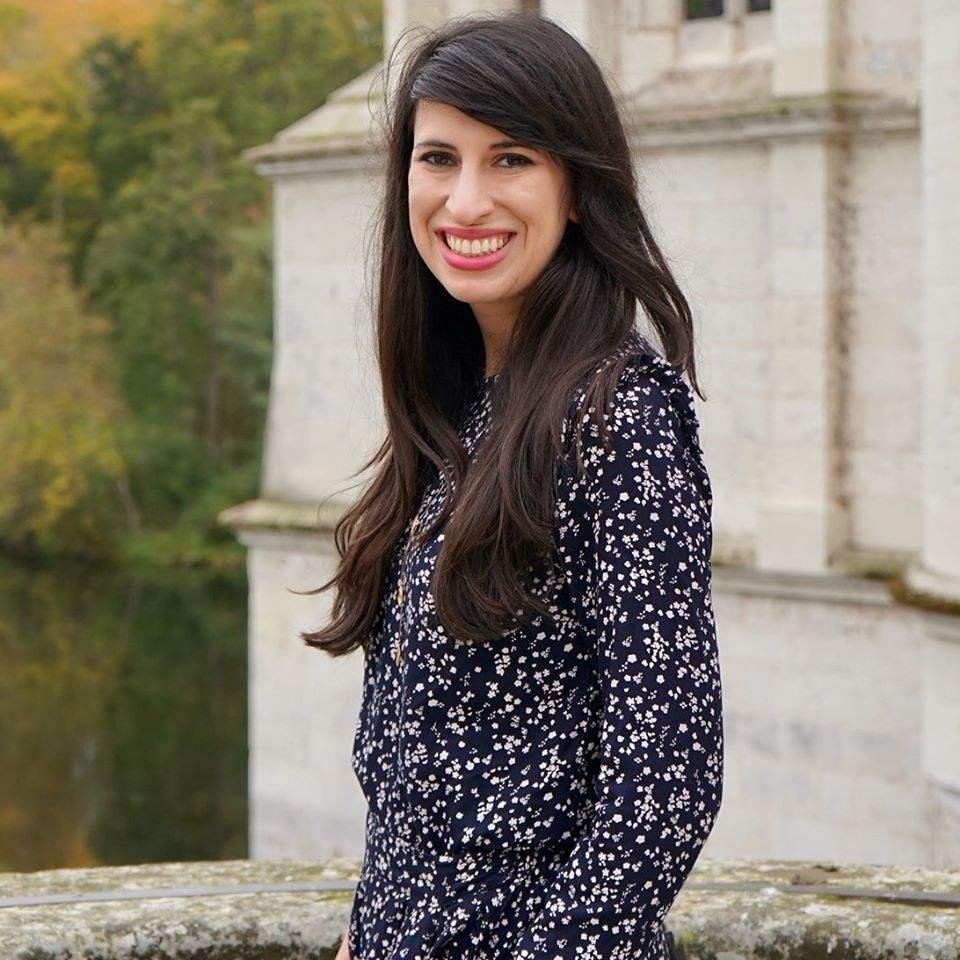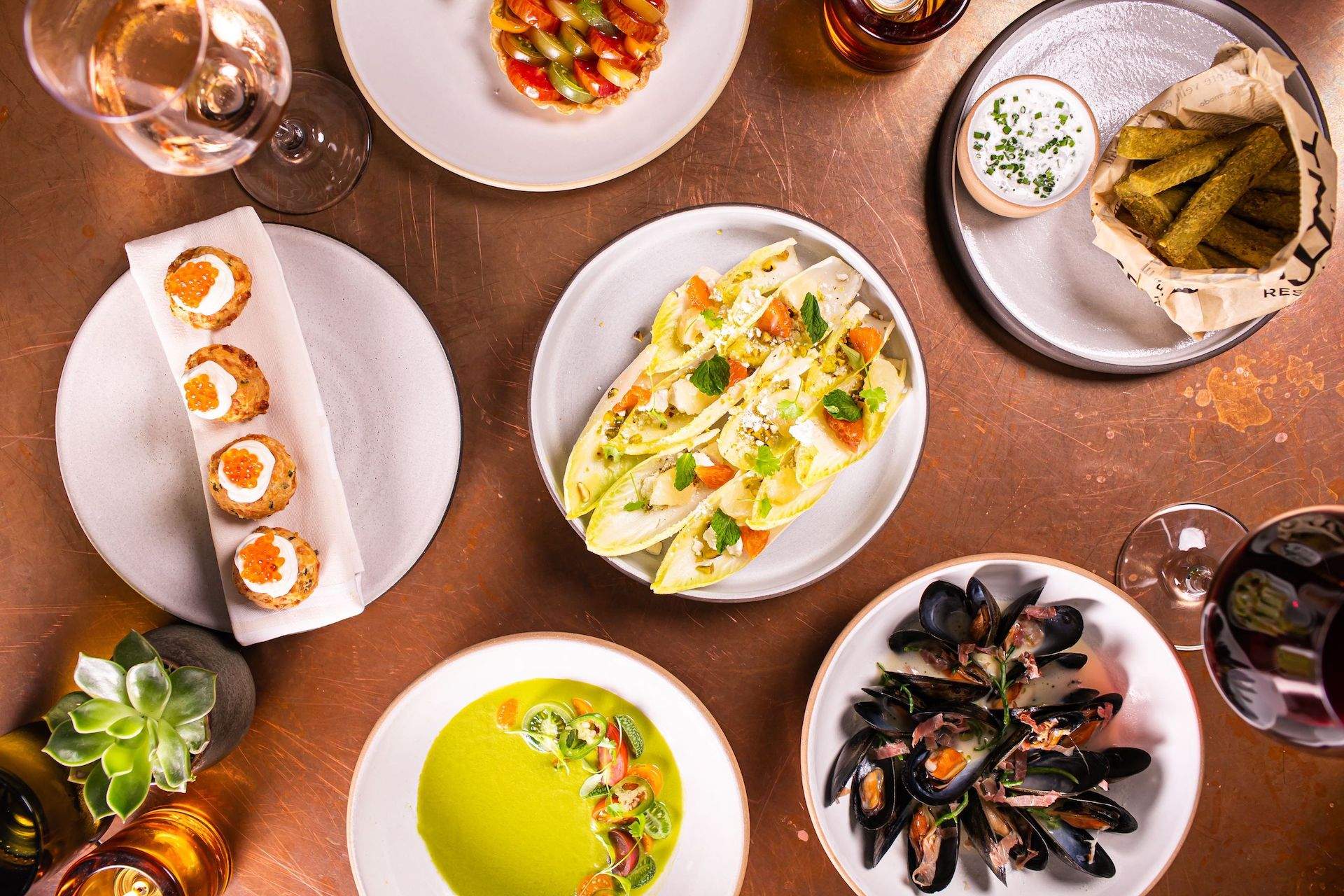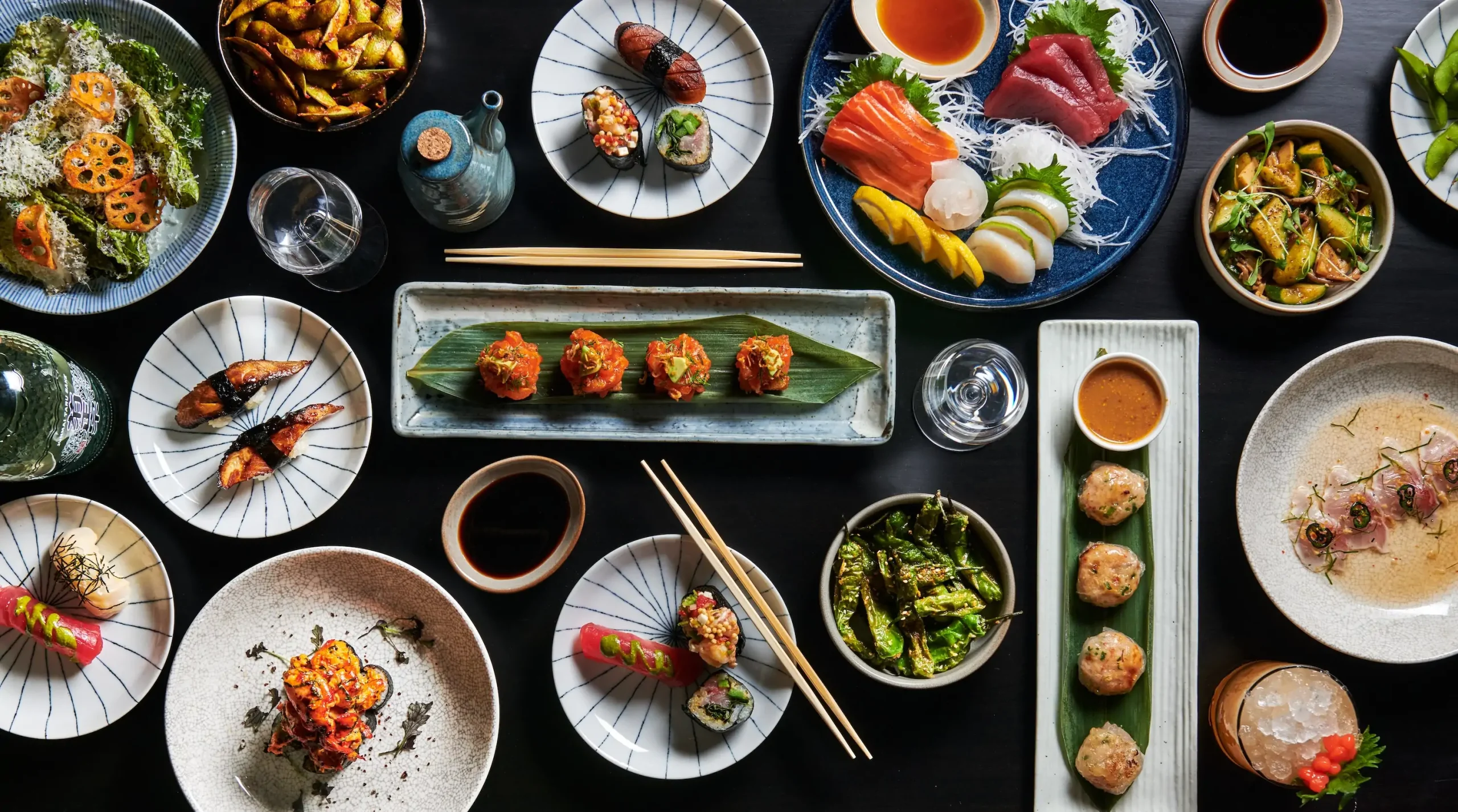When it comes to sustainability, many restaurants boast that they’re at the forefront of eco-friendliness—but what does that really mean? Sustainability can apply to ingredient sourcing, food waste, staff and employment culture, takeout and prep container recycling, energy use, and so much more.
As the world’s restaurant capital, New York City is constantly setting trends. The city has some of the most sustainable restaurants thanks to access to nearby farmers and walkable farmers’ markets, oceanways with restaurant-quality seafood, and extensive libraries and cultural resources to further the exploration of sustainability.
Read on to learn about three restaurants that are pushing the boundaries of what it means to be a sustainable restaurant by showcasing hyper-local produce, serving sushi brought in from Japan, and restoring the city’s oyster ecosystem.
A massive commitment to local produce at Print
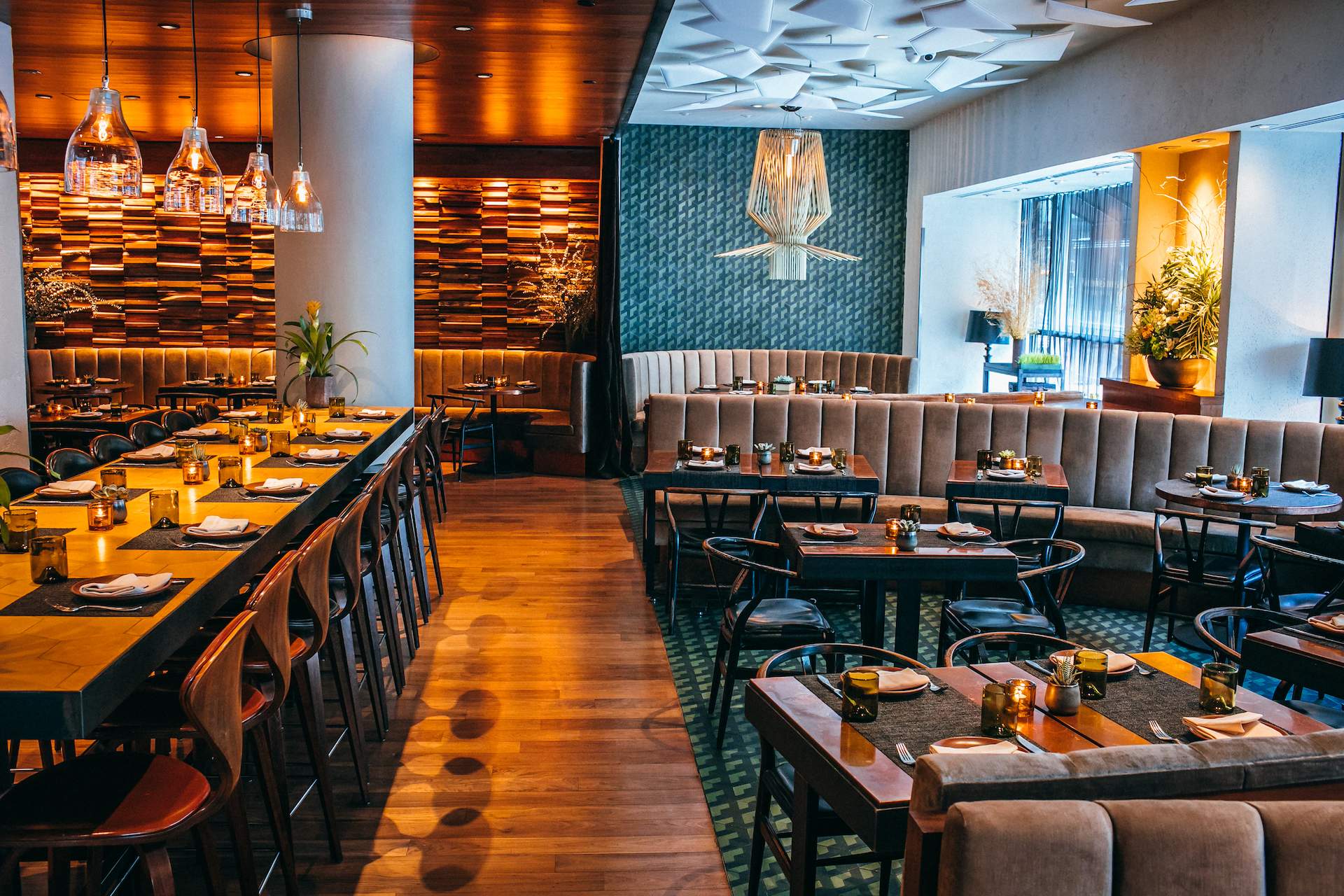
“It’s about time that farmers get some notoriety,” Print chef and purchasing director Matt Joyce says. “You have all these celebrity chefs and cooking shows, but that misses the whole [place] where it came from. People want to know where their food is coming from.”
This staunch commitment to hyperlocality is a rarity in New York’s restaurant scene and something Joyce would love to see more of.
At the beloved Hell’s Kitchen restaurant, diners are privy to the sourcing of their carrot bisque or endive salad with a simple ask to their server about the dish’s origins.
More than 80% of the restaurant’s food comes directly from farms, whether that’s through farmers Joyce schmoozes with at the Union Square Greenmarket most mornings, or the farm Print sources most spring, summer, and fall produce from in New Jersey.
“We get to learn about the whole growing process and take that back with us,” Joyce says of visiting the farm that grows so many of their staple items, including jalapeño and shishito peppers, tomatoes, and edible flowers.
In the spring, staff forage for ramps and fresh morels that are abundant on the farm.
“There’s just something comforting about going to eat at a restaurant where the food was literally just out of the ground,” Joyce says.
Sea-to-table sustainable sushi at Wokuni
New York’s sushi scene may feel like it’s reached its peak with omakase restaurants and takeout options popping up in nearly every Manhattan neighborhood.
Wokuni takes it a step further with its commitment to sustainability, adopting a signature sea-to-table service.
The Japanese restaurant has a direct pipeline to its seafood thanks to its owner and Japanese food purveyor Tokyo Ichiban Foods. The company’s aqua-farming, seafood processing, and distribution from Hirado, Japan to Manhattan keeps costs down and makes the product completely traceable to its origins.
The fish farm dictates what’s on the menu, so there’s little waste, and the marine environment the sushi is sourced from can be well maintained for future fish to thrive.
An in-house fish market also vends sustainable seafood to eat raw or cooked at home.
Wokuni has become a favorite for its monthly Tuna Entertainment series on the third Tuesday of each month. Two chefs break down a whole tuna, auction off the rare cuts, and sell the rest for half-off to diners to take home and make sashimi or sushi.
The butchering of the enormous fish is both educational and entertaining—diners get to see how the entire fish is used (no meat goes to waste) and appreciate the process of what it takes to import such a large fish (roughly 500 pounds) halfway across the globe.
Restoring New York’s ecosystems at Crave Fishbar
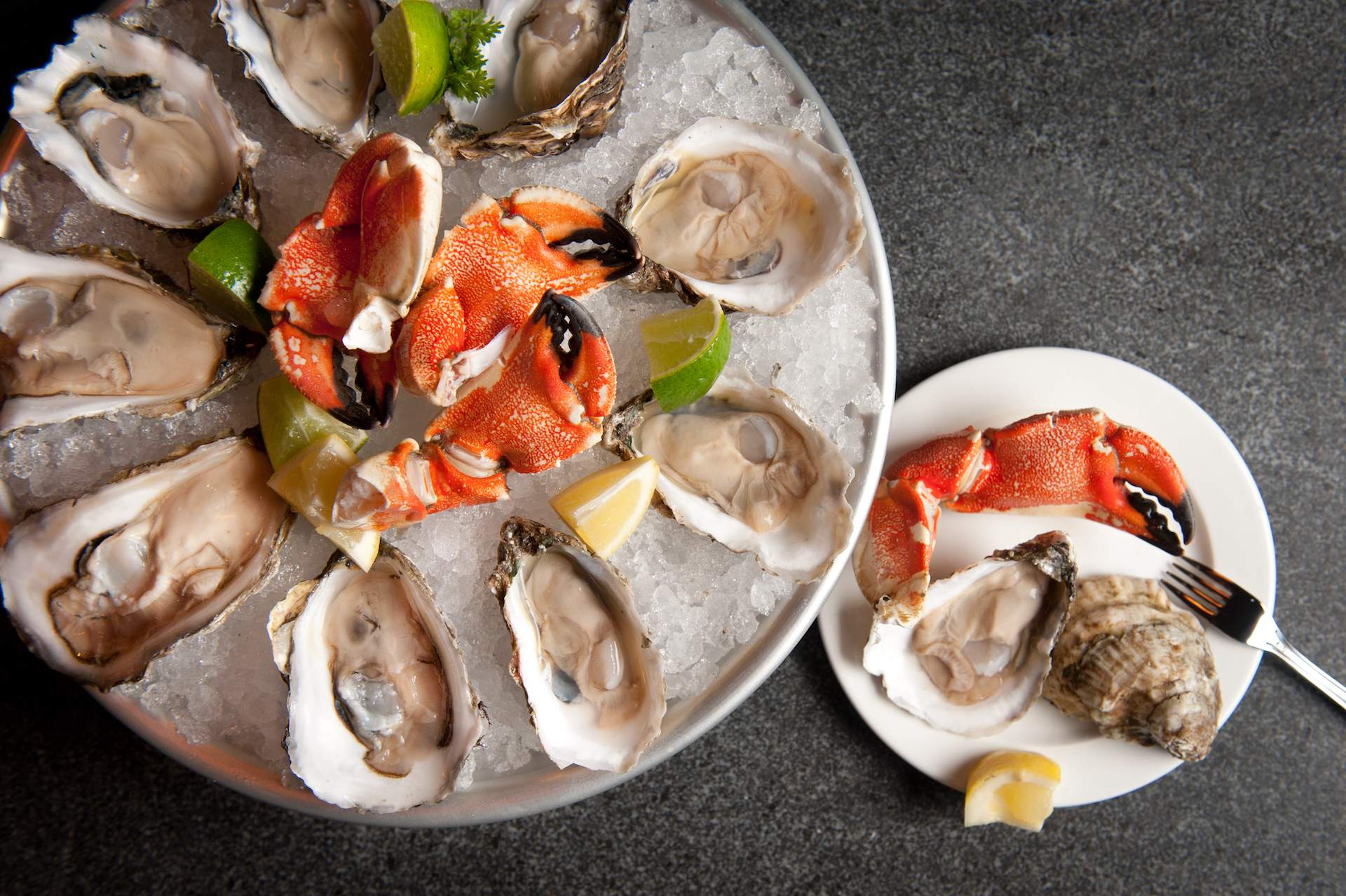
Known as New York’s first 100% sustainable seafood restaurant, Crave is at the forefront of ensuring longevity for New York’s vibrant local seafood scene.
“Both chef Todd [Mitgang] and I were born and raised in NYC and grew up having great memories of our childhoods spent at our local waters,” co-owner Brian Owens says. “If we are making the decision to feed our guests creatively prepared fish, we want to make sure those species are abundant and not headed for extinction.”
Eating oysters on the half shell at Crave’s popular happy hour (a daily special from 4 pm to 6 pm with $2 oysters) helps restore local waterways.
The Midtown East and Upper West Side outposts of Crave have donated more than 152,695 pounds of oyster shells (that’s more than 3 million oysters) to Billion Oyster Project over the last eight years. The organization returns shells to the New York Harbor to replenish the depleted oyster population.
Oysters both help clean and filter waterways and provide nourishment—eventually, New York City oysters (a decimated population) may be back on local menus.
Beyond bivalves, Crave’s entire menu is sustainably certified by the Monterey Bay Aquarium Seafood Watch, the top source in determining which fish and sea creatures are okay to eat (to avoid overfishing and other non-sustainable practices).
Both wild-caught and sustainably farmed fish are on the menu (hello, local fluke nigiri with tahini, lime, tamari, and grated ginger), a means to spotlight varieties with a lower carbon footprint. Local produce rounds out the menu.
Crave’s online fish market helps local cooks source restaurant-quality, sustainable seafood to prepare at home. For every market order, Crave donates one meal to feed a family of four in partnership with City Harvest.
What’s more, Crave often shares about sourcing and sustainability on social media to educate seafood fans about their consumption habits.
“We want to make sure that our children and future generations have the same positive experience with our local waters,” Owens says.
Melissa Kravitz Hoeffner is a writer based in Brooklyn, where she lives with her wife and rescue dog. You can follow her on Instagram @melissabethk and Twitter @melissabethk
